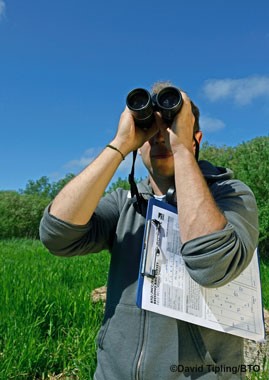This is a long-term national breeding bird survey, carried out across the country by thousands of volunteers every year. It aims to keep track of changes in the breeding abundance of over 100 widespread bird species in the UK. To take part, you need good visual and aural bird ID skills – to the point that you can recognise all birds that you regularly see in your area. The survey is administered by the British Trust for Ornithology (BTO), whose Regional Organisers (RO) provide new surveyors with a random OS grid 1×1-km square near their home postcode. This square is then surveyed twice between April and June. You can request a BBS square online by clicking on your area of the map, and a RO will contact you.
If you want to choose the 1×1-km square where you survey, you can do so, and follow the same instructions as for the random ‘issued’ BTO squares. You would not be able to enter your findings into the national database, so you can forego some of the detail on the bird recording form (and potentially ignore the habitat recording form altogether). However, you would have to think about how to interpret/analyse the breeding bird records you have collected. It could be as simple as comparing counts of observations of a certain bird each year. Bear in mind, though, that the BBS has been designed to provide a reliable bird abundance index after counts from all the squares have been aggregated. A single BBS square on its own does not provide a reliable indicator of local abundance (empirical evidence suggests that at least 10 km of transect, equivalent to 5 BBS squares, are needed to do this).
Surveying breeding birds © David Tipling/BTO

